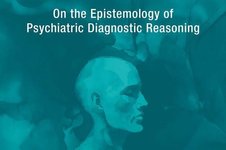
How Psychiatric Diagnostic Reasoning Works

The relevant contrast here is with causal modeling, where models represent the causes of something, while constitutive modeling is about the properties and characteristics of a phenomenon. A constitutive model tells us about characteristics and core features, but not why it happened (causes) or under what circumstances it will happen in the future... See more
Awais Aftab • How Psychiatric Diagnostic Reasoning Works
When models are used to identify and classify irregularities in a system, it is diagnostic modeling.
Awais Aftab • How Psychiatric Diagnostic Reasoning Works
Qualitative models can use two forms of idealizations: Aristotelian and Galilean. In Aristotelian idealization, many aspects of the real-world system are left out of the model to make the model easier to work with. In Galilean idealization, features are included in the model, but their complexity is intentionally reduced (for example, looking at... See more
Awais Aftab • How Psychiatric Diagnostic Reasoning Works
In qualitative modeling, which is what Kind is interested in, aspects of the real-world system are represented in a discrete manner. The states may be described, for instance, as “present,” “absent,” or neutral,” and relationships between variables may take the form of “increases,” “decreases,” or “irrelevant,” rather than mathematical formulae.
Awais Aftab • How Psychiatric Diagnostic Reasoning Works
First, they create a simplified model using limited, initial information about the phenomenon they’re studying, with parts of the model assigned to represent parts of the real system. Second, they closely examine the model they are using to understand what it says and predicts about the real-world system. Third, they compare what they’ve learned... See more